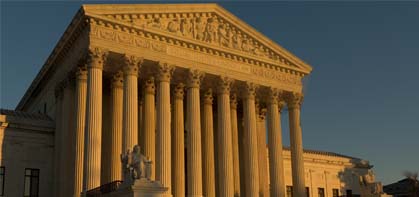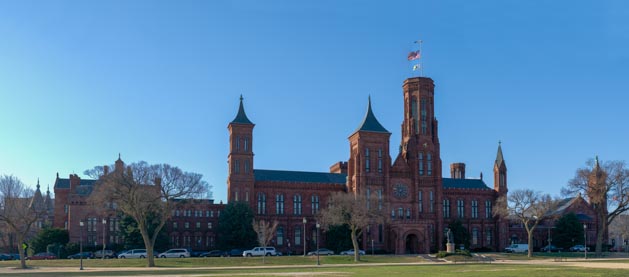|
United States Capitol

Set of four:
Capitol
East, East Closeup,
Capitol at 180˚,
and Capitol at Dusk (West)
|
|
The National Mall at 360°
The National Mall in Washington, D.C., is a historic and symbolic open park area that stretches from the U.S. Capitol to the Lincoln Memorial. Established in 1791 as part of Pierre L’Enfant’s design for the city, it is home to iconic monuments, memorials, and museums. The Mall serves as a space for national gatherings, public events, and significant historical moments, representing American ideals of democracy and unity.
Prominent structures viewable in this 360° photo include (L-R): Washington Monument, National Museum of Natural History (dome, partial), National Gallery of Art (West Wing), United States Capitol, National Air and Space Museum, Hirshhorn Museum, and Smithsonian Castle.
|

43167x2577
38.889692, -77.019875 |
|
The Supreme Court

|
|
Lincoln Memorial
|
The Lincoln Memorial, located on the National Mall in Washington, D.C., was dedicated in 1922 to honor the 16th U.S. President, Abraham Lincoln. Designed by architect Henry Bacon, the monument resembles a Greek temple, with a large seated statue of Lincoln by sculptor Daniel Chester French. It symbolizes unity and equality, hosting historic events like Martin Luther King Jr.'s "I Have a Dream" speech in 1963.
|

38.889271, -77.049433 |
|
Library of Congress
 Original size:
14697x3605 (53 megapixels / 49"x12" 300dpi print)
38.888689, -77.006043
Original size:
14697x3605 (53 megapixels / 49"x12" 300dpi print)
38.888689, -77.006043
|
|
National Gallery of Art

|
|
Smithsonian Institution
|
The Smithsonian Institution Building, commonly known as the Smithsonian Castle, was completed in 1855 and designed by architect James Renwick Jr. in the Gothic and Romanesque Revival style. It serves as the administrative hub for the Smithsonian Institution and features distinctive Seneca red sandstone. As the first Smithsonian museum building, it represents a significant architectural landmark and houses the tomb of James Smithson, the institution's benefactor.
|

Original size:
14295x6291 4.6MB
38.889917, -77.025165
|
|
Arts and Industries Building
|
The Arts and Industries Building, completed in 1881 on the National Mall in Washington, D.C., is the second-oldest Smithsonian building. It was initially constructed to house the National Museum and showcase exhibits from the 1876 Centennial Exposition in Philadelphia. Known for its Victorian architecture and distinctive iron-and-brick design, it has played a vital role in Smithsonian history, hosting various exhibitions and special events. Today, the building is a landmark reflecting the Smithsonian’s commitment to culture and innovation. At the center of the frame, a sculpture entitled "Columbia Protecting Science and Industry" by sculptor Caspar Buberl was placed above the main entrance on the north side of the building.
|

Original size:
20000x6361 10MB
38.889058, -77.024425 |
|
Natural History Museum
|
The National Museum of Natural History, part of the Smithsonian Institution, opened in 1910 on the National Mall in Washington, D.C. It holds one of the world's largest collections of natural specimens and artifacts, promoting the study of natural sciences. With iconic exhibits like the Hope Diamond and dinosaur fossils, the museum serves as a significant educational and research institution, drawing millions of visitors annually to explore Earth’s biodiversity and history.
|

13734x3559
38.889885, -77.025975 |
|
Washington Union Station
|
Washington Union Station, opened in 1907, is a historic train station in Washington, D.C., designed by architect Daniel Burnham. Blending Beaux-Arts and Classical Revival styles, it served as a major rail hub and gateway to the nation’s capital. The station underwent extensive renovations in the 1980s, preserving its architectural grandeur. Today, it’s both a bustling transportation center and a popular shopping and dining destination, symbolizing the city's historical and architectural heritage.
|

Original size:
29560x4620 (136 megapixels / 98"x15" 300dpi print)
38.896762, -77.006499 |
|
|
|
Back to
Panoramic Photos
Back to
Mid-Atlantic, Washington, DC
©2007-2010 Jinmin Zhou |
|